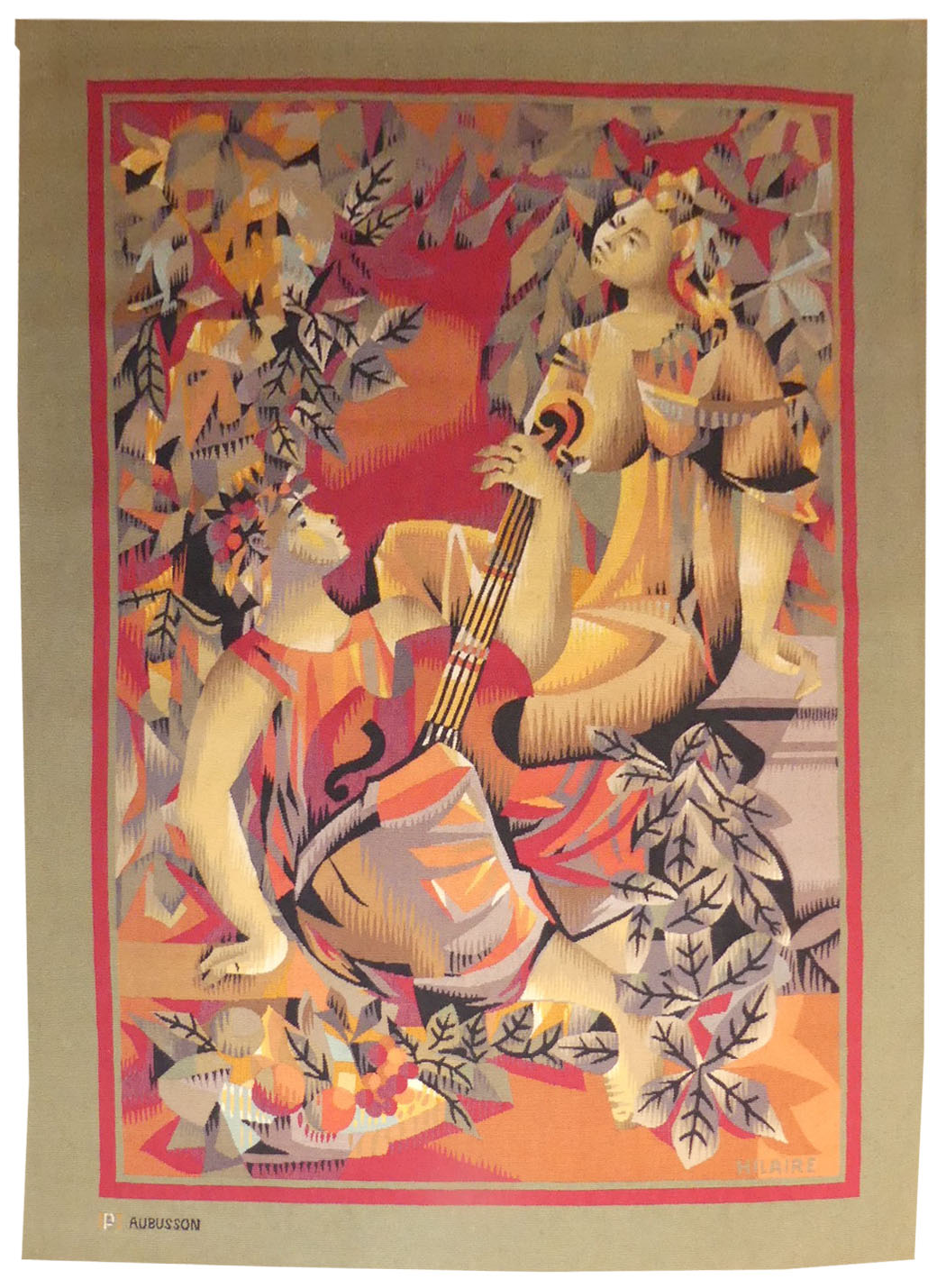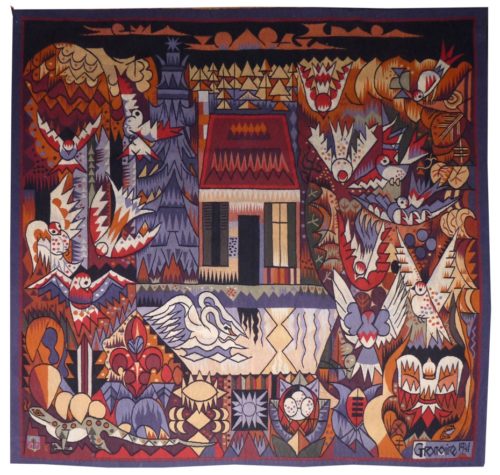La mare aux oiseaux (The bird pond)
Aubusson tapestry woven in the Goubely workshop.
N° II.
1941.
Gromaire’s woven pieces are few in number : 11 cartoons, designed between 1938 and 1944, most of them in Aubusson. “His rigorous construction, his use of simplification, his penchant for grand composition and grand fundamental ideas, his knowledgeable use of colour and in sum his supreme quality as a master-craftsman, all of those things were to make of him one of the most expert tapestry artists of his time”, so wrote Jean Cassou (Exhibition catalogue, Marcel Gromaire, Paris, Musée Nationale d’art moderne, 1963).
It was Guillaume Janneau, then in the chair of the Mobilier National, who contacted him in 1938, convinced that his style (simplification of shape, geometrical designs framed in black, influenced by cubism, limited colour schemes…) would have something to contribute to the resolution of the new aesthetic problems that the art of tapestry would have to confront in order to bring about its renewal (simplified palette, synthetic cartoon design...) firstly with a commission for a work on the theme of the four elements, then with a second (“les saisons”, the seasons) which would be produced at Aubusson. In 1940 Gromaire joined Lurçat and Dubrueil there. Working alone, with great meticulosity (numerous drawings anticipate the cartoon which is painted rather than numbered as with Lurçat), in close collaboration with Suzanne Goubely, who would weave all his cartoons, he spent 4 years in Aubusson, during which time he devoted all his creative energy to tapestry. At the end of the war, he left the Creuse and produced no more cartoons, leaving to Lurçat the position of grand initiator of the tapestry renewal movement.
The bird pond is typical of the aesthetic expressed by Gromaire in his tapestries, by its extremely decorative, almost dream-like quality (quite different from his graphic works), by the choice of subject, both animal and vegetable (and even architectural) and particularly influenced by the Creuse region. It is the extraordinary density, the proliferation and profusion which are particularly striking and which make Gromaire’s work in textile so inimitable.
Bibliography :
Le Point, Aubusson et la renaissance de la tapisserie, mars 1946, ill. p.34
André Lejard (dir.), French Tapestry, Paul Elek publishers, 1946, ill. p.103
Muraille et laine, éditions pierre Tisné, 1946, ill. n°51
Exhibition catalogue Tapisseries d’Aubusson, Luxembourg, Galerie d’art municipale, 1982, n° 3
Exhibition catalogue, Gromaire, œuvre tissée, Aubusson, Musée de la tapisserie, 1995, ill. p. 51
Exhibition catalogue La manufacture des Gobelins dans la première moitié du XXe siècle, Beauvais, Galerie nationale de la tapisserie, 1999



